Introduction: Sambalpuri Sarees are not just garments; they are an embodiment of a culture’s legacy and artistry. One such remarkable creation is the Sambalpuri saree, which hails from the heartland of Odisha in India. Admired for its intricate designs, vibrant colors, and exquisite craftsmanship, the Sambalpuri saree is a testament to the creativity and skill of the weavers of this region. In this blog, we will delve into the origins, unique features, and the enduring charm of the Sambalpuri saree.
Origins and Heritage: The Sambalpuri saree derives its name from the town of Sambalpur, located in the western part of Odisha. With a history dating back several centuries, the art of weaving these sarees has been passed down through generations. Sambalpur and the adjoining Bargarh and Sonepur districts have been the cradle of this timeless craft. The weavers, known as ‘Bhulia’ or ‘Meher Samaj,’ meticulously create each saree by hand, employing traditional techniques that have stood the test of time.
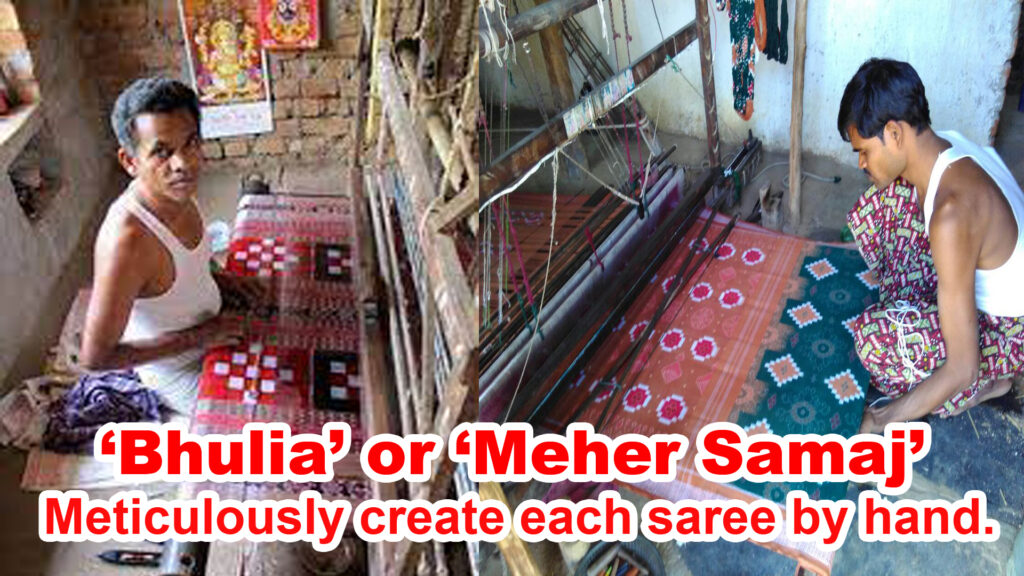
Distinctive Designs and Motifs: One of the most striking aspects of Sambalpuri sarees is the wide array of designs and motifs that adorn them. The famous ‘Bandha’ technique, also known as ‘Ikat,’ is employed to create these intricate patterns. The process involves tying and dyeing the yarn before it is woven, resulting in distinctive geometric and floral designs that permeate the entire fabric.
Some of the popular motifs seen on Sambalpuri sarees include the ‘Sankha’ (conch shell), ‘Chakra’ (wheel), ‘Phula’ (flower), ‘Baraja’ (leaf), and ‘Baila’ (vine). Each motif carries its own symbolic significance, often reflecting the cultural ethos and natural surroundings of Odisha. The colors used are predominantly vibrant and vivid, adding to the allure of these sarees.
Materials and Weaving Techniques: Traditionally, sarees were woven using pure cotton, making them comfortable and ideal for the region’s warm climate. However, with changing times, weavers have also started using silk and tussar silk, giving rise to variations such as Sambalpuri silk sarees and Sambalpuri tussar sarees. The use of silk adds a touch of opulence and elegance to the sarees while retaining their distinctive patterns.
The weaving process is labor-intensive and time-consuming, requiring immense skill and precision. Weavers use traditional pit looms to create these masterpieces, often taking weeks or even months to complete a single saree. The dedication and craftsmanship exhibited in each Sambalpuri saree make it a true work of art.
Celebrating Tradition and Revitalizing Heritage: The popularity of Sambalpuri sarees has transcended regional boundaries, with women across India and the world adorning these exquisite garments on various occasions. The intricate weaves and vibrant hues make them a preferred choice for weddings, festivals, and special events.
Furthermore, the demand for Sambalpuri sarees has not only brought economic prosperity to the weavers but has also helped preserve and promote the rich textile heritage of Odisha. Organizations, cooperatives, and government initiatives have played a vital role in empowering weavers, ensuring fair trade practices, and nurturing the art form.
Sambalpuri sarees encapsulate the soul of Odisha’s cultural heritage, blending artistic excellence with timeless elegance. The intricate designs, vibrant
colors, and skilled craftsmanship of Sambalpuri sarees make them a cherished addition to any wardrobe. The beauty of these sarees lies not only in their aesthetic appeal but also in the stories they tell and the traditions they uphold.
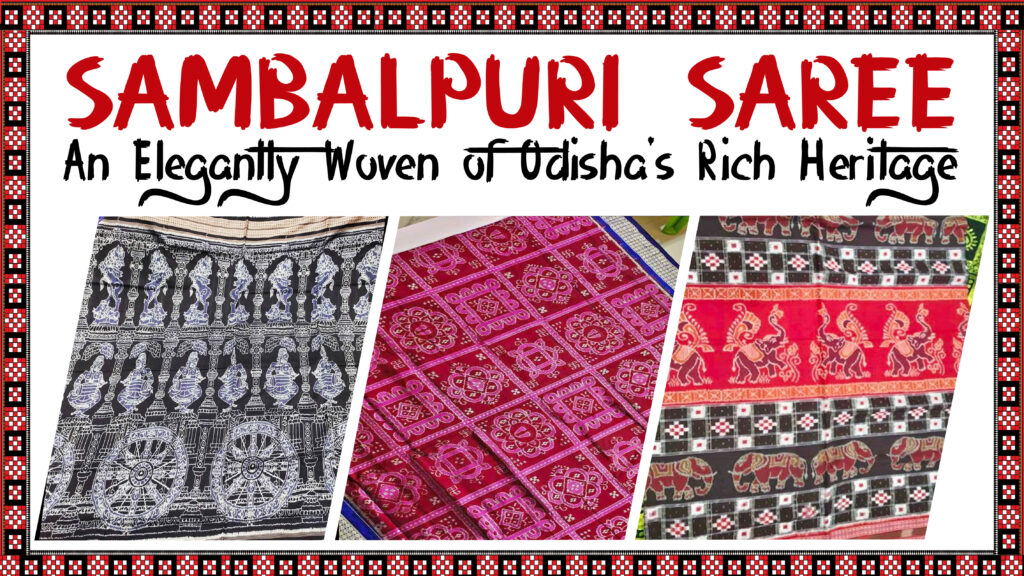
Sambalpuri sarees are not just garments; they are a visual representation of Odisha’s rich tapestry of culture, history, and craftsmanship. The motifs and patterns adorning these sarees are deeply rooted in the region’s mythology, folklore, and natural surroundings. Each motif tells a unique story, passed down through generations, connecting the present with the past.
The process of creating a saree is a labor of love. The weavers invest their time, skills, and creativity into every thread, ensuring that each saree is a masterpiece in its own right. The meticulous tie-and-dye technique requires precision and expertise, as the weavers tie thousands of tiny knots on the yarn to create the desired patterns. The dyeing process involves immersing the yarn in natural dyes, extracted from plants and minerals, further adding to the sustainability and eco-friendliness of these sarees.
The versatility of Sambalpuri sarees is another reason for their widespread appeal. They come in various styles and variations, catering to different tastes and occasions. From the traditional nine-yard saree to the more contemporary six-yard version, Sambalpuri sarees offer a range of options for women to express their individuality and style. They can be worn with intricately designed blouses or paired with contrasting accessories to create a truly unique and personalized look.
Moreover, Sambalpuri sarees have not only gained popularity within India but have also captured the attention of the global fashion scene. The exquisite craftsmanship, rich colors, and unique designs have made these sarees a sought-after choice for fashion enthusiasts around the world. Fashion designers have incorporated Sambalpuri motifs and fabrics into their collections, further highlighting the cultural significance and timeless beauty of these sarees.
The appreciation and recognition of Sambalpuri sarees go beyond their visual appeal. When you purchase a saree, you are not just acquiring a piece of clothing; you are supporting a community of skilled artisans and weavers. By choosing to wear a Sambalpuri saree, you become a patron of this ancient craft, contributing to the preservation and promotion of Odisha’s rich textile heritage.
Sambalpuri sarees stand as a testament to the artistic brilliance, cultural heritage, and enduring craftsmanship of Odisha. Each saree tells a story, intricately woven with threads of tradition, innovation, and creativity. Embracing a Sambalpuri saree means embracing the timeless beauty and cultural legacy of this magnificent art form. So, drape yourself in the elegance of a Sambalpuri saree and embark on a journey that celebrates tradition, craftsmanship, and the beauty of Odisha.
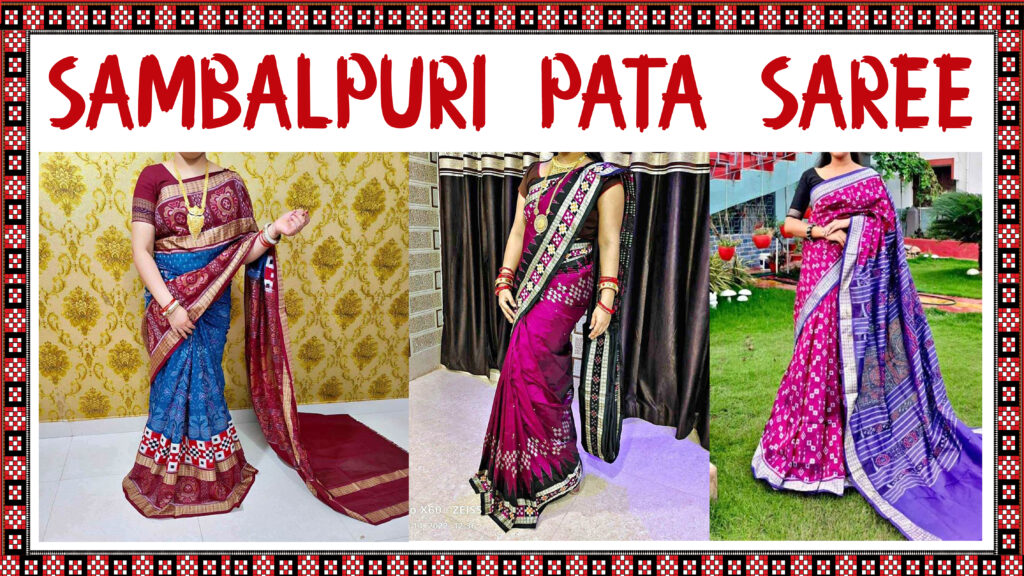
Here are a few additional points to further explore the beauty and significance of Sambalpuri sarees:
- Unique Tie-and-Dye Techniques: The tie-and-dye technique used in creating Sambalpuri sarees is known as “Bandha.” The weavers skillfully tie small portions of the yarn with thread, creating intricate patterns that resist the dye. This process requires immense precision and attention to detail. The resulting designs are characterized by their sharp edges and well-defined motifs.
- A Kaleidoscope of Colors: Sambalpuri sarees are known for their vibrant and captivating color combinations. The use of natural dyes adds depth and richness to the fabric, creating a visual feast for the eyes. From bold reds, blues, and greens to subtle earthy tones, each color palette tells a unique story and evokes a particular emotion.
- Sustainability and Eco-Friendliness: Sambalpuri sarees exemplify the use of sustainable and eco-friendly practices. The natural dyes used in the dyeing process are derived from plant sources such as indigo, turmeric, and madder root, ensuring minimal environmental impact. Additionally, the use of handloom weaving techniques promotes sustainable livelihoods and supports local communities.
- The Pride of Odisha: Sambalpuri sarees hold immense cultural significance in Odisha. They are considered a symbol of pride and identity for the people of the region. Wearing a Sambalpuri saree is a way of celebrating and preserving the cultural heritage of Odisha and paying homage to the skilled artisans who have kept this art form alive for centuries.
- Versatility and Adaptability: While Sambalpuri sarees have a traditional appeal, they have also evolved with time to cater to modern tastes and preferences. Contemporary designs, fusion elements, and experimentation with fabrics have broadened the appeal of Sambalpuri sarees, making them suitable for various occasions, ranging from traditional ceremonies to casual outings.
- Global Recognition: The intricate craftsmanship and exquisite beauty of Sambalpuri sarees have garnered international attention. They have been showcased on prestigious fashion runways and are sought after by fashion enthusiasts worldwide. This global recognition has not only elevated the status of Sambalpuri sarees but has also opened up new avenues of exposure and opportunities for the weavers.
- Beyond Sarees: While Sambalpuri sarees are the most famous products of this art form, the weaving tradition extends to other garments as well. Dupattas, stoles, scarves, and even home furnishings like bedspreads and cushion covers feature the unique Sambalpuri designs, allowing people to embrace this art in various aspects of their lives.
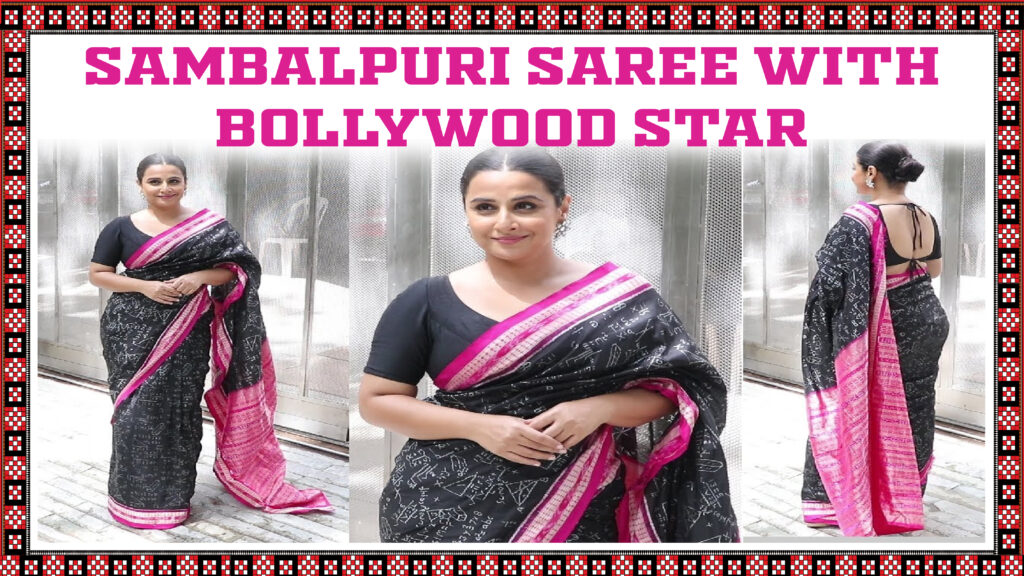
In conclusion, Sambalpuri sarees are more than just a piece of clothing. They are a representation of cultural heritage, skilled craftsmanship, and sustainable practices. The unique tie-and-dye techniques, vibrant colors, and versatility make Sambalpuri sarees an embodiment of timeless elegance and artistic excellence. By embracing a Sambalpuri saree, you not only adorn yourself in a garment of unparalleled beauty but also become a patron of an ancient craft that continues to thrive and inspire.

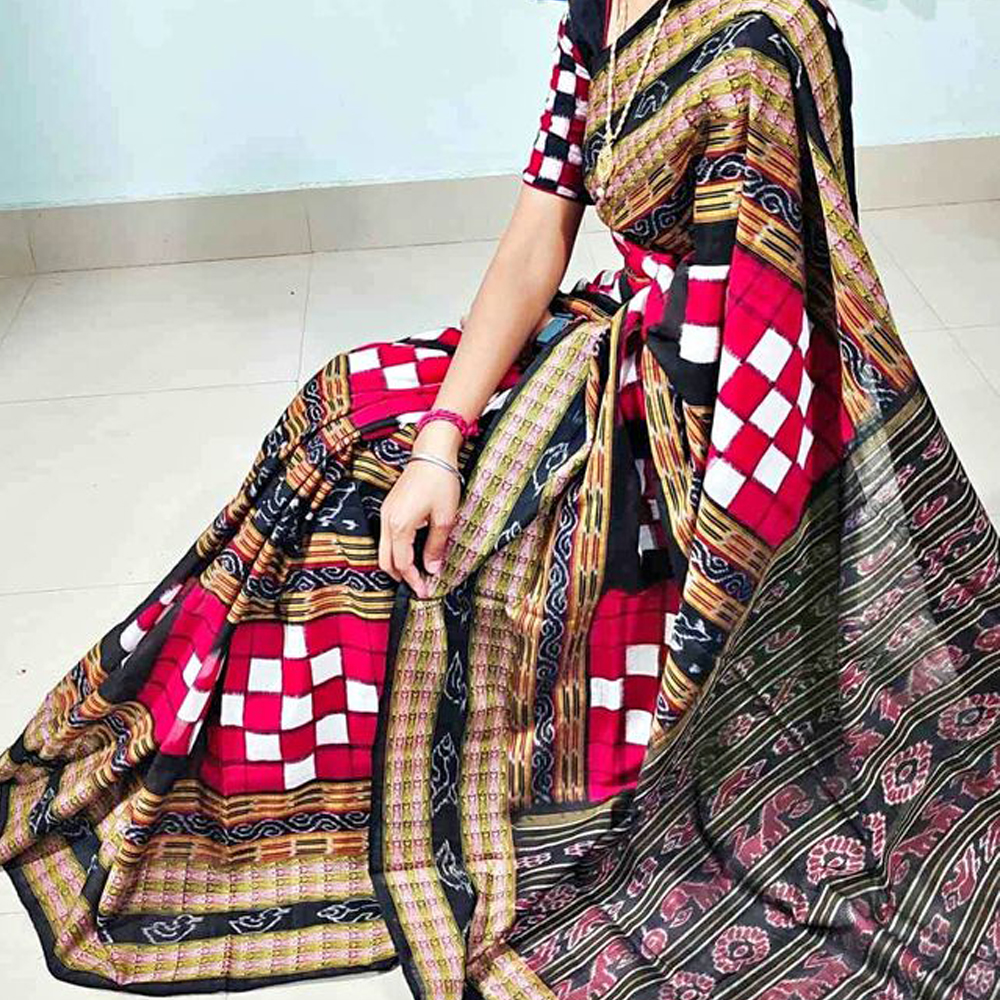


Sambalpuri Sarees are not just garments; they are an embodiment of a culture’s legacy and artistry.